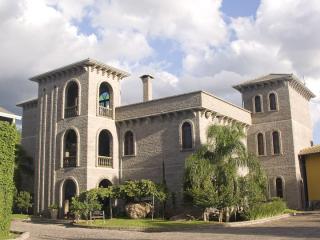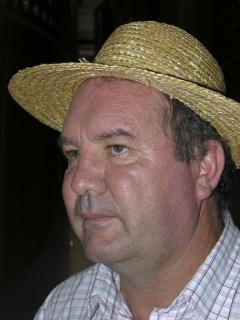Brazil - wine routes
POSTED ON 07/02/2009 Tuscan-inspired Casa Valduga
Tuscan-inspired Casa Valduga
Sitting at trestle tables lining a cavernous subterranean cellar, Mauricio and his great uncle Antonio are hosting a visiting group from the Czech Republic. As they tuck into their agnolotti and polenta washed down with liberal quantities of red, the Czechs are humming along to a bearded tenor belting out Ave Maria and Nessun Dorma as if he were Pavarotti. This is Dirceu Pastore, one of the many growers who supplies Mauricio and Antonio’s wine company with cabernet sauvignon grapes for their delicious Talento red. In a region that’s home not just to Mauricio and Antonio’s company, Salton, but the Carraros, Laurindos, Boscatos, Pizzatos and Perinis, among others, you might think yourself somewhere in Italy.
Brazil it is though, the Vale dos Vinhedos, to be precise, or in its southernmost province of Rio Grande do Sul. The Valley of the Vines (www.valedosvinhedos.com.br) is at the hub of a modern Brazilian wine industry that owes its existence to the influx of the Italians in 1875, when several boatloads of Italian immigrants arrived to take up the Brazilian government’s offer of land grants to escape the poverty of Trentino and Veneto. The best land had already been snapped up by Portuguese and Spanish settlers, so the Italians had to content themselves with the humid, hilly southern region of Serra Gaúcha.
But after a century of hard work, it’s all turned out rather well. From the luxurious vantage point of Villa Europa, the Caudalie-inspired vinotherapy hotel and spa (www.spadovinho.com.br), you can see why the Italians found such an affinity with the valley. Like Tuscany with a sub-tropical edge to it, a ravishingly pretty landscape of rolling hills shrouded by a duvet of white cloud is dotted with tiny houses and gardens and a tapestry of vineyards. Echoes of an ancestral past link seamlessly with today’s names: Ristorante del Filippi, Motel del Veneto and Benvenutti Centro Commercial.
 Miolo
Miolo
A sauvignon massage and naked rub in a tub by two young Brazilian women (you’re the naked one) puts you in the mood for a visit to Miolo over the road. One of the very few companies to date to export to the UK (www.coevintners.com), Miolo, like their neighbours, only started their own quality wine programme in the late 1908s, taking on Bordeaux’ super wine-consultant Michel Rolland and planting Portuguese grapes to make a succulent Quinta do Seival Castas Portuguesas. Miolo also make an excellent sparkling Miolo Millesime, and, as it turns out, fizz is one of the region’s main attractions.
The country towns of Garibaldi and Bento Gonçalves are centres of sparkling wine production. The former is home to the Garibaldi Co-operative, which makes 800,000 bottles a year. Bigger still is Aurora in Bento Gonçalves, whose tall buildings and church spires you can see silhouetted against a skyline of slow-moving cloud from the Vale dos Vinhedos. At Casa Valduga’s sparkling wine cellars, you might just get Juarez Valduga to demonstrate his skill at removing the cork of his espumante with a sabre. His straw peasant hat, omnipresent apart from in bed and at church, is a reminder of the humiliation at being laughed for his Italian immigrant hat when seeking a bank loan 35 years ago.
 Juarez Valduga
Juarez Valduga
From the revolving top of the Restaurante Mirante da Serra in Veranopolis, the landscape becomes a middle and far distance of sweeping hills reminiscent of Montalcino in southern Tuscany. Above the Rio das Antas, the long river that loops through the countryside as it heads towards Buenos Aires, roadside cafés with market stalls perch above the river, tempting you in for an iced glass of sugar cane juice and coconut while you sit and admire the view, or peruse their shops for the produce of local Italian families: salamis, biscuits, cakes, jams, chocolates, nuts and fruit preserves.
Continuing along Brazil’s southern wine route of Campanha, Flores da Cunha and Monte Belo do Sul, you’ll be surprised not just at the number of wineries but the quality of the fine fizz, whites made mainly from chardonnay and medium-bodied, fruity reds based on merlot. It’s encouraging to see these varied components of a modern wine industry carving a distinctive South American niche for Brazilian wines; even if it will take a while longer before they compete for our attention with the usual suspects of football, carnival and beaches.

